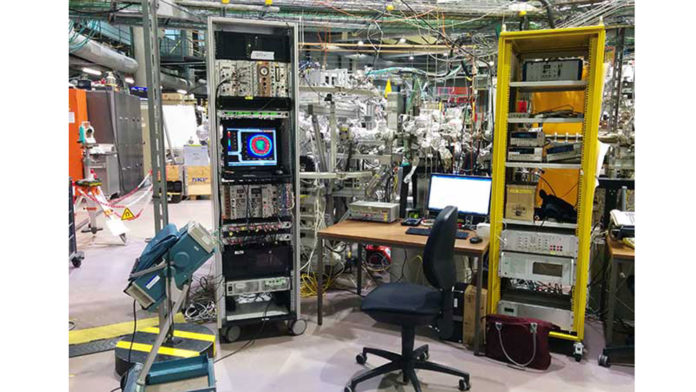Almost a century ago, Albert Einstein won Nobel Prize in Physics for his work on the photoelectric effect. The photoelectric effect is one of the most fundamental processes used for probing atoms, molecules, and condensed matter.
Scientists have identified the photoelectric effect in molecules extensively. But, scientists haven’t yet determined its evolution over time in an experimental measurement.
The basic question of whether the emitted electron appears in the continuum instantaneously or after a short delay has been under investigation for decades. A Ph.D. student working within an international team of researchers at the Institute for Nuclear Physics at Goethe University Frankfurt, Jonas Rist, has found the answer.
Rist used a COLTRIMS reaction microscope and found that the emission takes place lightning-fast, let’s say within a few attoseconds.
Till Jahnke, the Ph.D. supervisor of Jonas Rist, said, “The length of time between photon absorption and electron emission is very difficult to measure because it is only a matter of attoseconds. This corresponds to just a few light oscillations. It has so far been impossible to measure this duration directly, which is why we have now determined it indirectly.”
“To this end, scientists used a COLTRIMS reaction microscope—a measuring device with which individual atoms and molecules can be studied in incredible detail.”
Scientists fired extremely intense x-ray light at a sample of carbon monoxide in the center of the reaction microscope. The energy from the X-ray beam dislodges one of the electrons from the innermost electron shell of the carbon atom. As a result, the molecule fragments. The oxygen and carbon atoms, as well as the released electron, were then measured.
Rist said, “And this is where quantum physics comes into play. The emission of the electrons does not take place symmetrically in all directions.”
The carbon monoxide molecules have an outstanding axis: The emitted electrons, as long as they are still in the immediate vicinity of the molecule, are still affected by its electrostatic fields. This delays the release slightly—and to differing extents depending upon the direction, the electrons are ejected.
Electrons are also a wave character, which manifests in an interference pattern on the detector. Using the reaction microscope, scientists could measure these interference effects. Based on these effects, they could also determine the delay indirectly with great accuracy.
Jahnke said, “These measurements are not only interesting for fundamental research in the field of physics. The models used to describe this type of electron dynamics are also relevant for many chemical processes in which electrons are not released entirely but are transferred to neighboring molecules, for instance, and trigger further reactions. In the future, such experiments could also help to understand chemical reaction dynamics better.”
Journal Reference:
- Rist, J., Klyssek, K., Novikovskiy, N.M. et al. Measuring the photoelectron emission delay in the molecular frame. Nat Commun 12, 6657 (2021). DOI: 10.1038/s41467-021-26994-2
